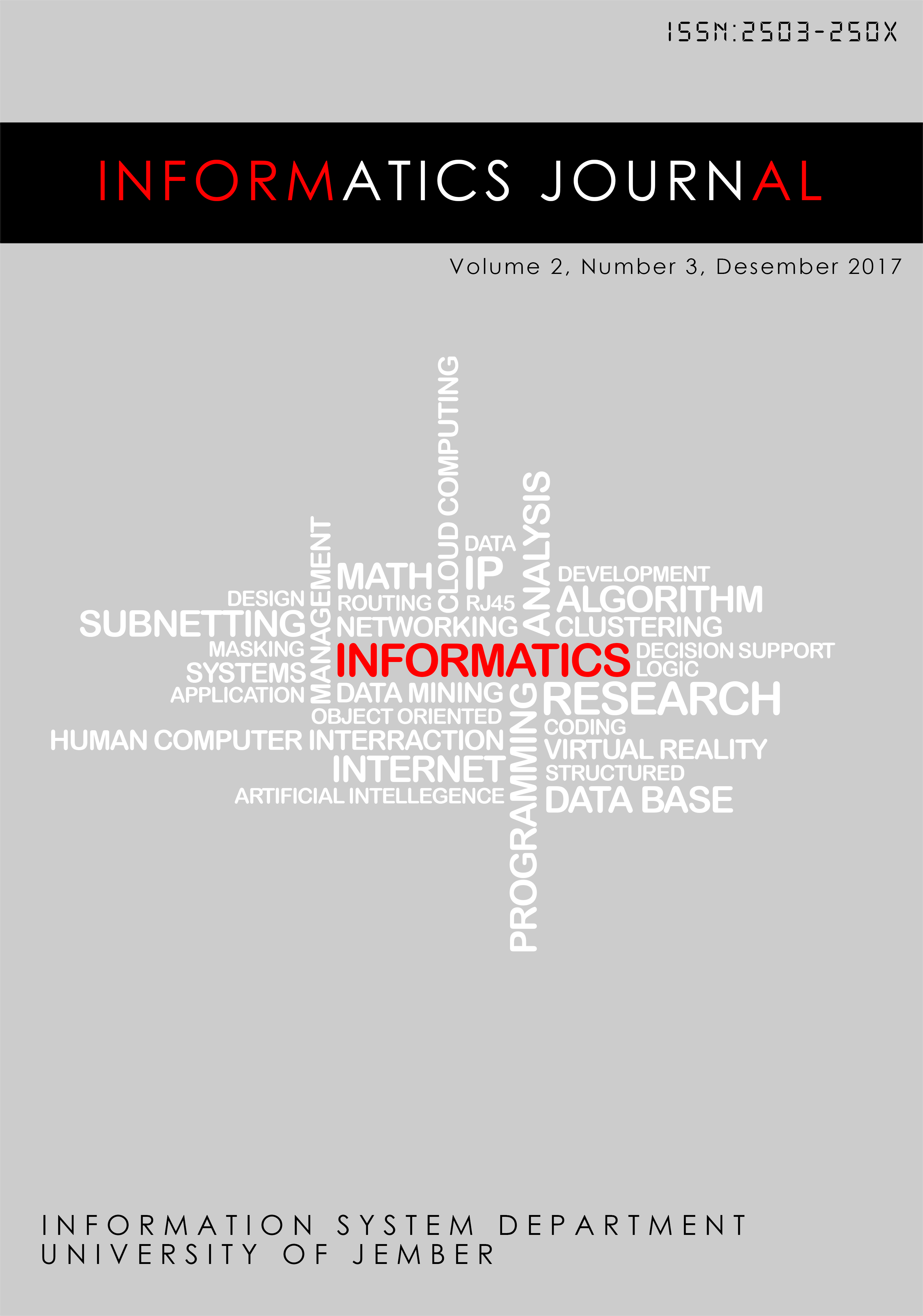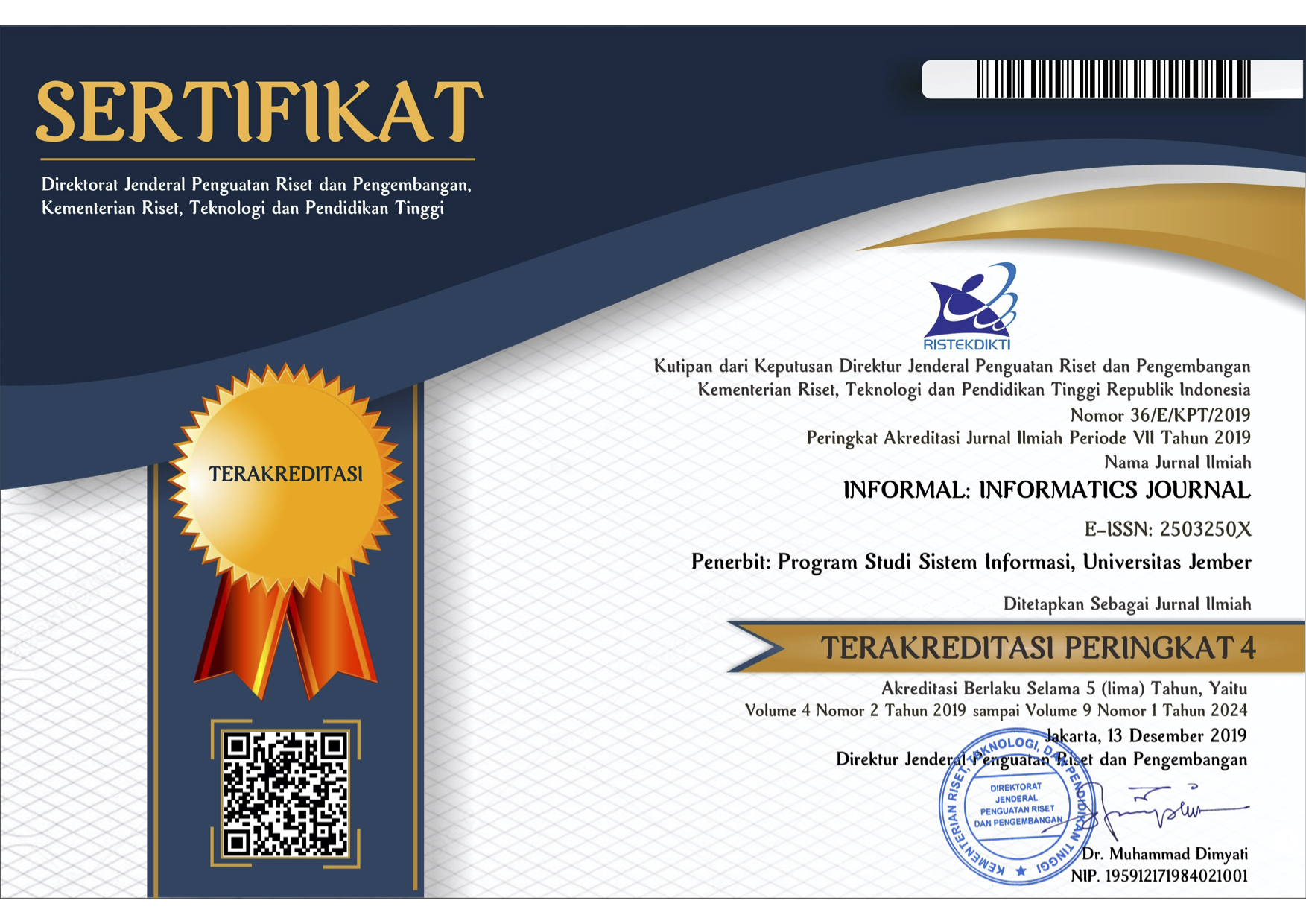Optimasi Waktu Lampu Pengatur Lalu Lintas Menggunakan Algoritma Genetika di Persimpangan
Abstract
In the modern era of population growth is increasing, the increase in the number of population then increased also the means of transportation that causes traffic congestion. intersection are the concentration of traffic issues that become one of the main causes of traffic congestion, this is because the intersection is where the migration of cars from one to the other road segments. Traffic lights are the lights used to curb road users crossing a road junction, but most traffic lights do not run optimally, causing traffic congestion. In this study proposed a method of genetic algorithm for optimization of the traffic lights with the aim of getting the model movement of car and get the fitness function model for the optimization of traffic light so as to get traffic lights are optimal on each road segment base on total average number of cars were able to pass through the intersection . Base on scenarios testing 1, produces lights optimal on each road segment, namely roads 1 and roads 3 for 49 seconds for green time, roads 2 and the road 4 for 55 seconds for green time means total average number of cars passing through the intersection of as many as 81 cars and Base on scenarios testing 2, produces lights optimal on each road segment, namely roads 1 and roads 3 for 56 seconds for green time, roads 2 and the road 4 for 54 seconds for green time means total average number of cars passing through the intersection of as many as 95 cars.







